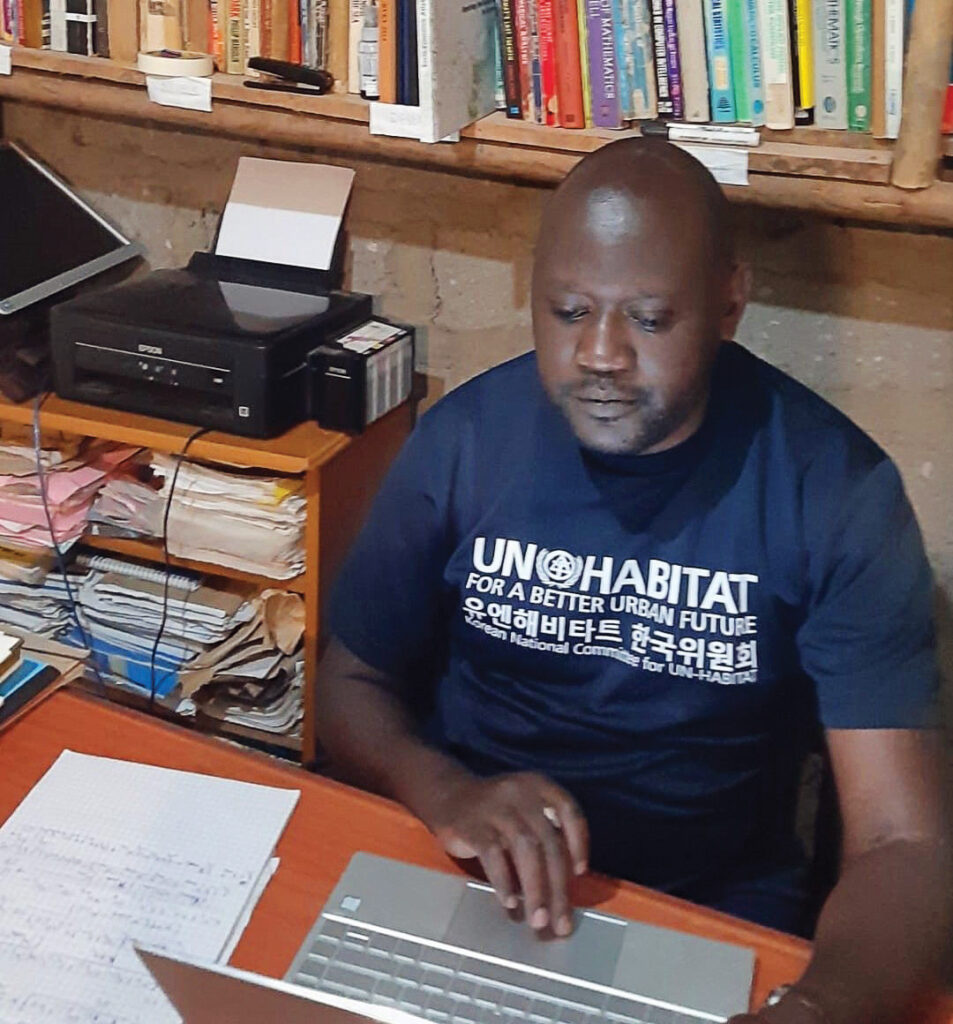ADF STAFF
Kenyan mathematician Dr. Shem Otoi Sam has become his country’s oracle of COVID-19. Using a predictive model he developed, Sam found a way to forecast the rise and fall of infection waves, making him a kind of weatherman for the pandemic in western Kenya.
Sam, 39, goes on local radio to advise residents when they need to be more careful “by telling people — police, public education — ‘We’re going to have a peak. We don’t want to lose you,’” he told ADF.
As a survivor of COVID-19 himself, Sam knows personally how intense an infection can become and how important it is to prevent others from contracting the disease.
Sam’s modeling helped lay the groundwork for western Kenya’s Integrated Online Data System. The system helps Kenyan health officials monitor the availability of resources such as intensive care unit beds and high-flow oxygen so doctors and hospitals can know where to send patients. That has helped the region reduce the wave peaks, Sam said.
Early in the pandemic, skeptics claimed COVID-19 would not affect Africa. Sam’s first attempt at modeling pandemic outcomes confronted that false claim directly.
“When the first Covid-19 case came out in the country, I started scratching my head, comparing the Covid-19 infection rate, death rates and recoveries to other regions of the world,” he told Kenya’s The Nation.
His work showed that the continent was headed down the same path as the rest of the world when it came to COVID-19.
To expand his forecasting ability for COVID-19 waves, Sam adapted a mathematic model known as ARIMA, which stands for autoregressive integrated moving average. The adaptation let him extend ARIMA’s forecast capability from about one month up to eight, making it possible to predict infection waves farther into the future. The goal was to help public health officials prepare hospitals and their staffs for coming waves.
Forecasting has helped reduce the overall impact of COVID-19 in western Kenya, Sam said.
“We’ve been experiencing low peak intensity because people are forewarned. They [hospitals] prepare in advance, so they’re not overrun,” Sam said. “At the same time, my model has helped save not only lives but livelihoods.”

